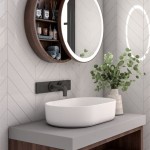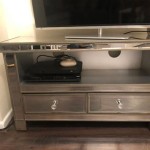How Does a Head Mirror Work?
A head mirror, also known as an otoscope mirror or an ophthalmoscope mirror, is a specialized medical instrument used by healthcare professionals to examine the ear, nose, and throat (ENT) regions. Its primary function is to reflect light onto the target area, allowing for a clear and magnified view of the internal structures. This article delves into the workings of a head mirror, explaining its components, principles of operation, and applications.
Components of a Head Mirror
A head mirror typically consists of three essential components:
- Reflector: This is the primary element of a head mirror, usually made of a highly reflective material like glass or metal. The reflector is a concave mirror that focuses light from an external source, such as a penlight, onto the area being examined.
- Frame: The frame holds the reflector in place and allows it to be adjusted for optimal positioning. It may be made of metal or plastic and is typically designed to fit comfortably on the head.
- Headband: The headband straps the frame to the user's head, ensuring stability and allowing for hands-free operation. It is often adjustable to accommodate different head sizes.
Some head mirrors may include additional features like a built-in magnifying lens or a retractable lens for varying magnification levels. The shape and size of the reflector, as well as the angle of the frame, can be tailored to suit different examination needs.
How the Head Mirror Works: Reflecting Light and Enhancing Vision
The principle behind the head mirror's operation lies in the laws of reflection. The concave mirror in the head mirror acts as a converging lens, focusing the light from an external source onto a single point. This focused beam of light is then reflected off the surface of the mirror and directed towards the area being examined.
To use a head mirror effectively, the user needs to adjust the position of the reflector and the frame. This helps align the focused beam of light with the target area and optimize the angle of reflection. The user's eye is positioned close to the mirror, enabling them to see the reflected light illuminating the internal structures being examined. The combined effect of the reflected light and the user's proximity to the mirror enhances visibility and allows for thorough examination.
Applications of Head Mirrors
Head mirrors are commonly used in various medical settings, including:
- Otolaryngology (Ear, Nose, and Throat): Head mirrors are essential for ENT specialists to examine the ear canal, tympanic membrane, nasal cavity, and throat. The reflected light allows visualization of these structures, aiding in the diagnosis and treatment of various ENT conditions.
- Ophthalmology (Eye Care): While not as common as ophthalmoscopes, head mirrors can be used to examine the eye, especially the anterior chamber and the cornea. The reflected light facilitates a better view of these structures, aiding in eye health assessment.
- Dental Care: Some dentists may use head mirrors to examine the oral cavity and teeth, especially for patients with limited mouth opening. The reflected light provides a better view of the teeth and surrounding structures, allowing for more accurate diagnosis and treatment.
Head mirrors continue to be valuable instruments in various healthcare settings, providing a non-invasive and efficient method for examining and illuminating internal structures. Their versatility and ease of use make them essential tools for healthcare professionals across different specialties. However, with the advent of more advanced technology, such as handheld otoscopes and ophthalmoscopes, the use of head mirrors has been gradually declining in certain areas.

Head Mirror Wikipedia

Head Up Display Hud Sekurit Service

How A Head Up Display Works Scientific Diagram

Origins Of The Binocular Head Mirror Mystery Dr Clar Clarified Sciencedirect

Head Up Displays

Head Mirror Wikipedia

1 Head Mirror

How Does Heads Up Display Hud Work Continental Explains Safety And Comfort Of Technology

How A Head Up Display Works

Reflected Light And How Mirrors Work Ks2 Lesson Powerpoint








